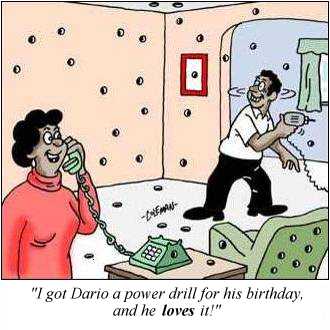Building-automation systems used to function in separate technology silos. Now vendors are rapidly adopting IP, Web services and other technologies that are beginning to converge with traditional IT infrastructures.
News Story by Robert L. Mitchell
MARCH 14, 2005 (COMPUTERWORLD) - At Panasonic Corporation of North America's headquarters, a project is under way to replace wall-mounted thermostats with individual, virtual thermostats controlled by PCs. Real estate management firm Kenmark Group in San Francisco created an operations center to save energy by centrally monitoring and controlling the multiple office buildings it manages. The system includes a common Web portal and uses XML and an IP backbone network to "talk" to components within individual buildings.
Toronto Pearson International Airport is tying a flight information database to heating, lighting and air conditioning systems at each gate in order to restrict energy use to those periods when gate areas are occupied.
As building automation systems (BAS) that control heat, air conditioning, lighting and other building systems get smarter, they're converging with traditional IT infrastructures. Emerging standards are enabling data sharing between building systems as well as with other business applications, improving efficiency and real-time control over building operating costs. Information security concerns, immature standards, the reluctance of vendors to give up proprietary technologies and ignorance among IT professionals of the convergence trend are all slowing the pace of this transformation, but it's gathering momentum.
Facilities managers are driving the change by demanding more-open systems. They're pushing BAS vendors to transform today's closed technologies into Web-enabled applications running over industry-standard IP networks. And the management of BAS is likely to increasingly fall to IT.
"IT folks are entering an era where virtually everything is converging in their direction, and it broadens their horizons tremendously," says Rick LeBlanc, president of HVAC products at Siemens Building Technologies in Buffalo Grove, Ill. IT won't operate BASs, but it will serve the facilities staff as a customer in much the same way it does accounting and other departments today, he says.
Many large companies already have centralized BASs that monitor and control the environment throughout large buildings and across campuses. These systems have begun to migrate to more open IT infrastructures in much the same way that telephone systems and IT networks have converged.
"Right now, there is a clamor to integrate control systems into IT networks," says Tom Hartman, principal at The Hartman Co., a consultancy in Georgetown, Texas. But the trend is likely to go well beyond that. Today's BASs typically include a network of sensors and other devices connected to controllers on each floor, a master controller for a building or campus, a Web server front end for monitoring building systems, and a back-end database for storing historical data (see diagram, page 28). But as intelligence continues to move into actuators, chillers, security cameras, sensors and other elements of building systems, these devices will increasingly communicate as peers via Web services, allowing BASs to be more flexible and integrate better with other systems.
"Next-generation buildings will be much more [integrated] than simply having the building automation system use the IT network," says LeBlanc.
"The long-term vision is that you'll be able to physically control everything based on preferences, criteria and business rules," says Joshua Aaron, president of Business Technology Partners Inc., a New York-based consultancy that helps companies physically move their IT infrastructures and data centers. But, he adds, "I don't see a lot of companies springing for it yet."
Open standards are just beginning to evolve and will likely break down the silos between building systems ranging from physical security to elevator controls. And the data from those systems is likely to be shared with other business applications such as the accounting system. This will allow for more-efficient buildings as applications are developed that can capitalize on newly converged data streams and real-time access to data.
"Standards will allow data to be shared between the two systems, and business decisions can be made [based] on that merged data," says Ron Zimmer, president of the Continental Automated Buildings Association (CABA) in Ottawa. But this nascent trend has largely gone unnoticed by IT organizations, Zimmer says. "It's being driven by the building side."
In the past, controlling the heat involved a call to the facilities person in the basement, who would turn valves to adjust the temperature. Current automated systems use sensors to detect comfort level and actuators to control the valves, but little else has changed.
"The first step with systems when they get computerized is you pave the cow path," says Toby Considine, chairman of the OASIS Open Building Information Exchange (OBIX) committee, which was formed in April 2003 to develop a standard, Web-based set of building-control system interfaces.
Converged Nets
Standardization has started from the bottom up. Proprietary cabling systems in networks that link sensors and other devices to controllers on individual floors have given way in recent years to two competing, open protocols, BACnet and LonTalk, while floor controllers are migrating onto IP backbones.
Barry Haaser, executive director of LonMark International, says LonTalk and BACnet will prevail at the device level for technical and cost reasons. Others aren't so sure. "Instead of two guys running the IT and controls networks, why not one guy? I see IP going down to the individual device," says Anno Scholten, chief technology officer at BAS vendor Plexus Technology Ltd. in Irving, Texas.
But sharing the IP backbone raises security concerns among network administrators. Yale University is starting a project to consolidate its BAS onto an IP network that will link 210 campus buildings, and it plans to tie the BAS into a room-scheduling system that will automatically control energy usage based on room occupancy. For security reasons, Bill Daniels, manager of systems and technologies for the university's facilities group, has created an isolated, parallel network that's protected by firewalls and uses nonroutable IP addresses to keep data off the Internet.
Jerry Hill, director of systems engineering at Yale, says security is paramount. "We don't want a student to hack into our building management systems just because they can," he says.
The problem is that Daniels wants to integrate the BAS with the university's accounting system for billing and chargeback, but facilities staffers who log in remotely typically can't get a static IP address from their Internet service providers.
Security is a problem at multiple levels, says Considine. Control system manufacturers have rudimentary password security mechanisms, but most have "no concept of directory-enabled security," he says. This worries Mark Kendall, CEO of Kenmark Group. "In some of our buildings, you can access the front door locks. Security is a very serious matter," he says.
Web Enablement
The pieces for successful IT/BAS integration aren't all in place yet. "Various XML groups are developing schemas to interface the building systems to the business systems," says Kirk McElwain, technical director at CABA. But right now, the lack of an industrywide language to program controls is an impediment, says Considine. He expects XML-based schemas to evolve but says basic interfaces must come first. What's needed is an abstraction layer so that programmers or other users don't have to understand control systems, he says.
For example, Johnson Controls Inc. developed a system for Toronto Pearson International Airport that's designed to allow its Airport Traffic Information Management System (ATIMS) to control lighting and heating at gates as air traffic controllers update flight information. The ATIMS database can pass an encrypted XML message via SOAP to a control system that brings up heat and lights at a gate.
Michael Riseborough, the airport's general manager of building and facilities, says that's just one part of an ongoing integration process.
The OBIX initiative includes a draft discovery service to allow sensors and other devices to plug and play. OASIS is also working on an alarm service that will offer a common interface for alerts and a service for recording historical data such as room temperatures. Industry-specific services are also under discussion, Considine says. "If OBIX works, we may have more Web services that are OBIX-related than all other Web services combined," he says.
Users are already experimenting with Web-based interfaces and XML. Kenmark Group can query sensors and other devices on its LonTalk network by way of a gateway. Updates go to a central database in its operations center. But integration isn't always easy.
Estructures Inc. offers a hosted BAS service that uses SOAP and XML to interface with customers' building-control systems through a LonTalk gateway device. But the interface only goes so deep. "It's only a veneer. Oddly enough, [customers] seem to be comfortable with that," says Scholten, former vice president at the Austin-based company. But behind the scenes, integrating with customers' building-control systems isn't as easy as it should be. "Because there are no standards, we're doing a lot of self-invention," he says.
BAS vendors continue to move cautiously and cling to proprietary interfaces, but Hartman says the industry will move on with or without them. "I don't think it's going to be the control companies that are going to lead the way on this. It's going to be the IT manufacturers," he says.
Companies that outsource IT to companies such as IBM often ask if the vendor can manage the BAS also, says Robert Frazier, an executive consultant at IBM. Today's systems are just too proprietary to gain the economies of scale necessary to do that profitably, he says. But emerging standards will make it possible to manage these systems within IT management frameworks.
"This is really emerging," says Mark Cherry, marketing manager at Honeywell International Inc. in Morristown, N.J. "Because IT's infrastructure is leveraged to knit this together, IT is becoming the glue."



















